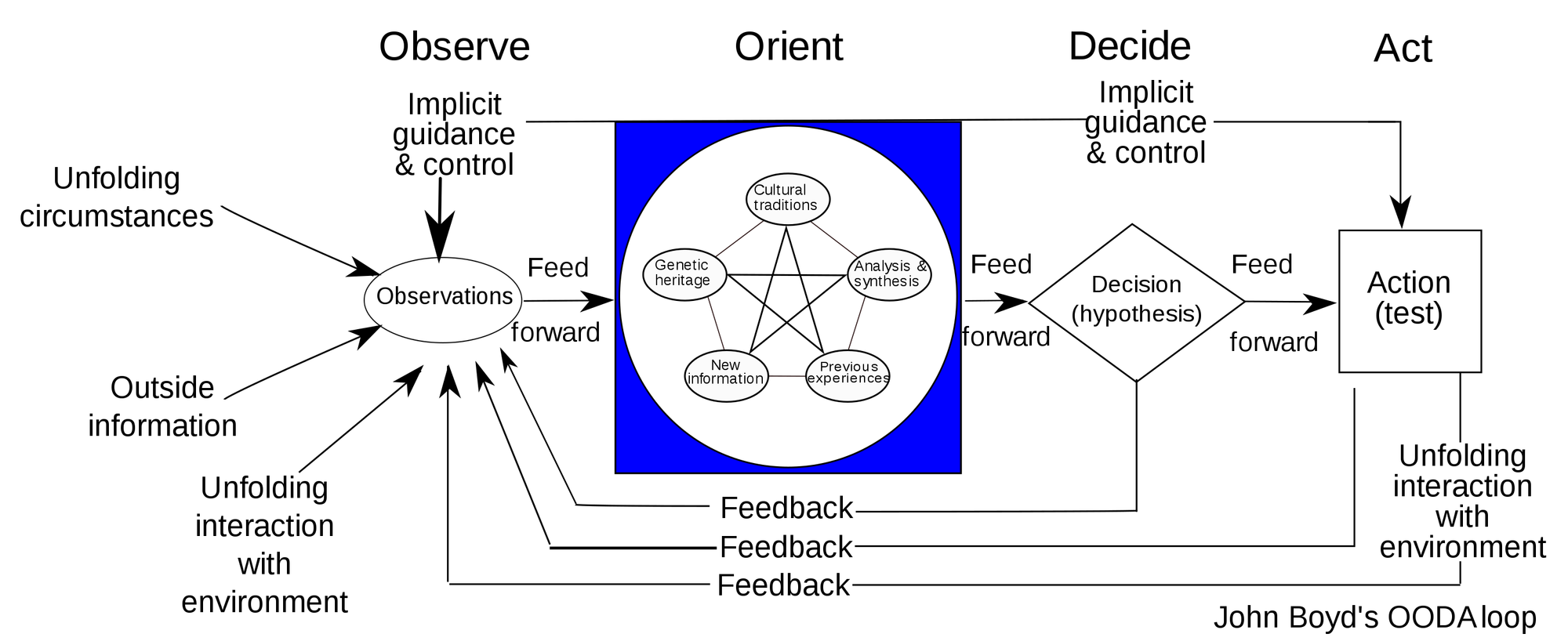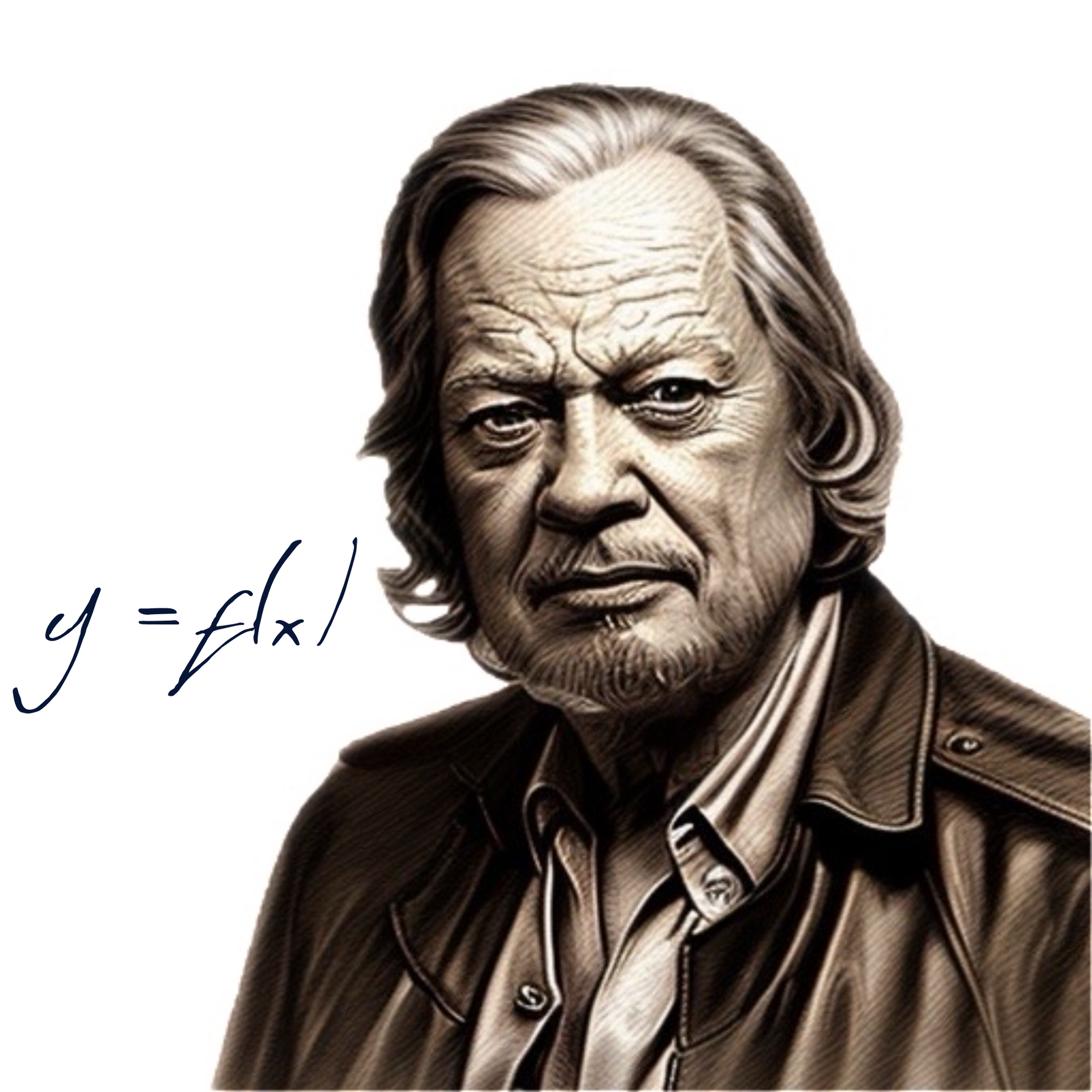Table of Contents
Due to circumstances novel to conventional warfare, Ukraine is getting inside Russian OODA[1] loop for R&D by feedback/feed forward integration of battlefield field experience in near realtime. The new weapons procurement process of
- requirement identification
concept selection
proof of concept
engineering
manufacturing
training
logistics and
deployment
no longer spans decades but at most field seasons. This year will see radical compression of that paradigm.
Tip of the Spear Realism
You must always fight today’s engagement with the kit you have at hand. You can’t kill with a weapon you don’t have. Therefore, you must do more with the kit you have by changing how it is used. A veteran combat operation does this instinctively purely as a matter of natural selection. That’s how it survived to become veterans, though Darwinian pressures. Doctrine proceeds from immediate experience, rather than the other way around.
How is not what. How does not conjure new equipment but its new wielding — from where to where with what intensity and intent. Effective how proceeds from operation manuals only as a departure point to innovation. To date this has been the analog process of applying integrated cognitive reasoning with the operative factor being gut instinct. Gut instinct is the organism’s non-conscious integration of experience, the real know-how. This is due to bounded rationality[2]. The incoming information from the combat environment is high dimensional. The permutation of possibly relevant known, missing and unknown variables is not feasibly computable. The search of the sample space for any solution simply takes too long to be useful. There may not even be a solution capable of implementing a given mission.[3] Changing the mission, even if it means withdrawing at cost, may be the only alternative that is output — solving the problem you have rather than the problem you wished you had.
Ukraine This Year Will Debut AI as a Force Multiplier
By AI, I mean not an artificial intelligence experience analysis tool, but, rather, an artificial intuition integrator that spits out the empirical percentage shots.
UAI, Ukrainian Artificial Intuition, will be a triad consisting of combat debriefing, model training and prompt engineering. UAI turns strategic withdrawal on its head. Instead of trading space now for time now, it will trade time now for space sooner. Creating UAI requires more frequent rotation to debrief experience while it is both still in wetware and fresh, application of time otherwise available for combat to model/prompt validation and UX/UI testing. It also requires diverting available civilian manpower from competing uses, including induction in combat operations.
In a period of rising urgency for force replenishment and augmentation through the use of available combat and civilian personnel, time devoted to recovering lost territory must nonetheless be sacrificed to UAI R&D to make possible the future gain in space at lower ultimate cost to greater areal extent. Trading space for time incurs opportunity costs. A mitigating effect however, will to be exploiting personnel physically unfit for combat as part of the UAI infrastructure.
Lesson to be Learned for the United States
The implications for the US military-industrial complex are enormous. Simply put, conventional battlefield success will depend not on smart bombs, on kit, but on smart integration of actual experience through the methods of UAI.
As between the three models of military operations it is clear where the future will be found
- The Russian meat machine is demographically unsustainable
- The American metal machine is becoming obsolete
- The Ukrainian demonstration of complex adaptive systems through UAI will be compelling
The Lesson to Embrace
The life of the law has not been logic; it has been experience
This is the maxim summing nearly a millennium of common law tradition in the civil sphere. The military sphere must embrace that wisdom beyond anecdotal evidence.
Notes
[1] Observe Orient Decide Act, John Boyd’s combat paradigm

See also John R. Byrd: Destruction and Creation
[2] Simon, H. A. (1955). A behavioral model of rational choice. The Quarterly Journal of Economics, 69(1), 99–118
[3] Gödel K 1931 Über formal unentscheidbare Sätze der Principia Mathematica und verwandter Systeme I ¨Monatshefte für Mathematik und Physik” 38 173–198. See also English translation: Meltzer B 1992 On formally undecidable propositions of “Principia Mathematica” and related systems (Dover).
Mascot of the Day










